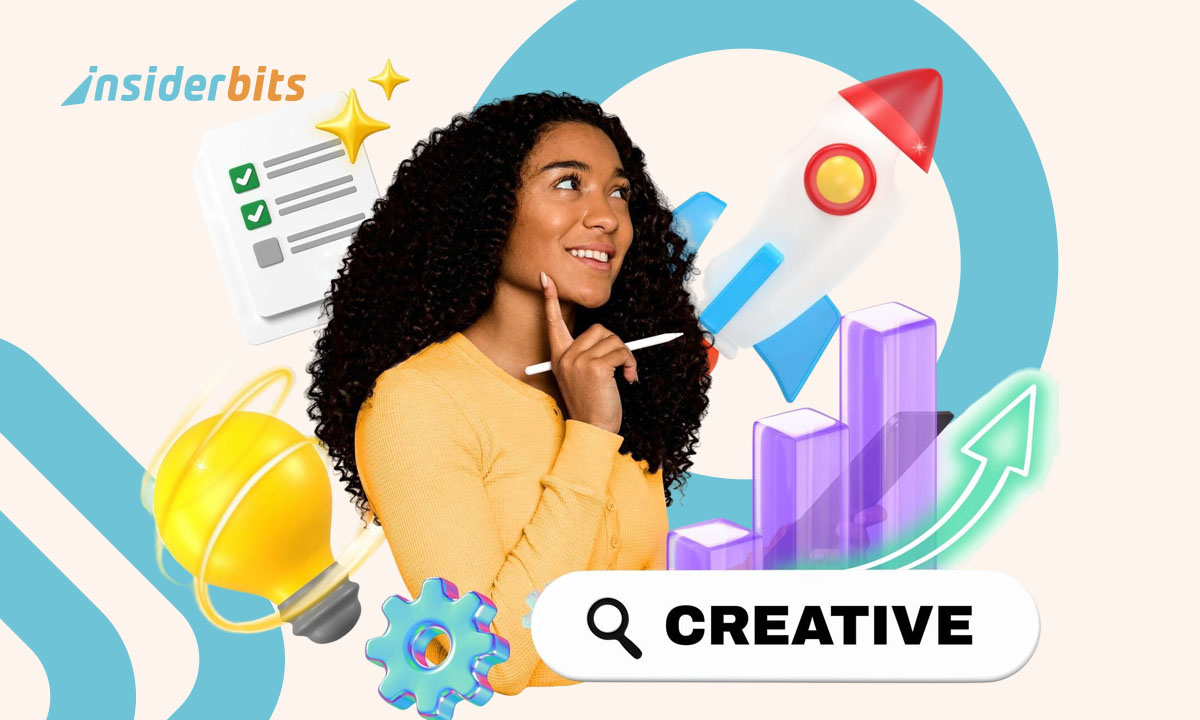Figma is a new tool that was built to become the main ally for UI/UX teams and product designers. By removing the need for file syncing, local installs, and endless email threads, Figma offers a cloud-first approach that feels natural to both beginners and seasoned professionals.
From wireframes to full-scale prototypes, it puts every tool in the same workspace, and opens the door for seamless teamwork, whether across the desk or across time zones.
Insiderbits breaks down what makes Figma essential in modern design stacks, how it helps you work smarter, and where it outpaces some older tools.
- Design Your Own Universe with Comic Creation Apps
- Créez votre avatar PNGTuber : outils, conseils et techniques
- Best AI for Designers: The Ultimate Creativity Boost
Why Figma is the best design tool for creatives
Figma (iOS/Android) has become the go-to platform for digital designers because it eliminates the need for local installation and offers a browser-first experience that works on any device.
The platform welcomes users with a nice interface where ideas quickly take shape without delay, file management headaches, or software updates.
Figma is considered by many seasoned designers the best design tool for creativity, because they often notice a dramatic boost in speed and clarity.
However, not only do more experienced designers have a good time using Figma. Many newcomers also enjoy a soft learning curve supported by active community forums and built-in resources.
Since there are no offline versions to juggle or licenses to configure, the user’s energy remains focused on design execution.
In this case, Figma acts as a shared workspace where creativity scales without friction or technical constraints.
4.5/5
Real-Time Collaboration for Remote Teams
Seeking real-time collaboration, Figma allows design teams to work together in real time as if they were gathered around a single screen, even when continents apart.
Each participant appears live in the file, and their cursors are visible as they leave comments or make adjustments.
This setup is revolutionary and replaces traditional back-and-forths involving long email threads used to give suggestions.
Through this real-time platform, stakeholders can review progress, suggest edits, or approve decisions directly on the design itself without disrupting the workflow.
Consequently, feedback becomes timely and contextual, attached to specific interface elements or frames, leading to clearer discussions and fewer misunderstandings, especially in agile environments with fast iteration cycles.
With the right use of the platform, remote teams are capable of aligning faster with fewer meetings.
This is a major key to gain momentum on product development without sacrificing quality or cohesion.
UI/UX Design Made Simple (Even for Beginners)
It is common for new designers to often feel intimidated by complex tools, but Figma offers a refreshing sense of clarity from the first interaction.
All starts with an interface that avoids clutter and presents only what’s needed at each stage of the process, reducing decision fatigue while encouraging experimentation.
In addition, users can arrange interface elements while exploring responsive layouts, style settings, and prototyping tools without feeling lost.
Therefore, each one of these actions is supported to feel logical, and visual cues guide the flow without interrupting creativity.
To help UI/UX design be simpler, auto-layout and smart selection tools also help by bringing structure to designs while preserving flexibility.
Even beginners with no prior design experience can build a functional mobile interface or landing page in their first session.
Overall, Figma removes barriers that often slow creative learning, enabling faster progress and a stronger foundation in UI/UX principles.
Free vs. Paid: What Features Do You Get?
If you’re interested in knowing more about the plans, you need to know that Figma’s free version delivers core functionality that supports most personal projects and small collaborations.
In this plan, users can work on unlimited files, use design tools without restriction, and even invite collaborators to comment or co-edit in real time within shared projects.
Meanwhile, the paid version gives users more control and scalability. For instance, team libraries, analytics, design systems, and access management tools come into play as projects grow in complexity or team size.
Even at the professional or enterprise level, Figma remains cost-effective compared to traditional desktop design suites. There’s no need for bulky hardware or individual installations, and updates roll out seamlessly via the cloud.
Plugins, Templates, and Workflow Hacks
The Figma app has a plugin library that extends the platform’s power with automation tools, accessibility checks, content generators, and more.
The best part of this: users can install and activate plugins in seconds. After that, it is possible to customize the environment to fit their daily routines.
Designers know that templates can accelerate the design process with pre-built layouts. These resources help users understand best practices while saving time on basic structure and alignment.
Also, some workflow hacks, like using auto-layout with constraints for applying custom variables, help maintain design logic across screens. These techniques enhance productivity while making designs easier to update over time.
Combined with keyboard shortcuts, third-party integrations, and community resources, Figma becomes a flexible powerhouse that adapts to any design process or project type.
4.5/5
Figma for Design: Create, Collaborate, and Innovate – Conclusion
As we saw throughout this article, Figma is transforming the way digital design is created and shared, offering a unified space where collaboration happens in real time and creative flow remains uninterrupted.
Now it’s clear how the platform serves both beginners building their first interfaces. The future of design is already happening, and it’s happening inside Figma.
If your workflow still depends on outdated files or fragmented tools, Figma offers a cleaner, smarter, and more connected way to design. The future of interface design is all linked and built in Figma.
En rapport : How to Design Your Own Logo: Best Tools & Tips
Enjoyed this article? Save the Insiderbits blog to your favorites for the latest tools, creative tech tips, and photo editing breakthroughs.





